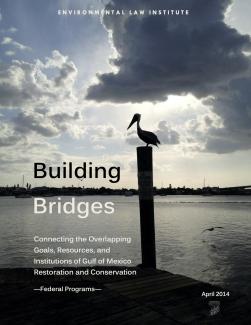
On April 20, 2010, an explosion rocked the Deepwater Horizon mobile offshore drilling unit. Eleven crewmen lost their lives in the blast, and the rig burned for the next thirty-six hours. Then, forty-one miles off the southeast coast of Louisiana, the Deepwater Horizon sank. Back at the wellhead, a quarter-mile away and 5,000 feet beneath the surface of the Gulf of Mexico, the environmental disaster was just beginning. Oil gushed for the next three months, during which millions of barrels of oil mixed with millions of gallons of dispersant to contaminate more than 1,000 miles of coast.
This assessment begins with an overview of the primary funding mechanisms for Gulf recovery, including the RESTORE Act, the ongoing Natural Resource Damage Assessment (NRDA), and the settlements with some of the parties responsible for the spill. After a brief examination of their goals and the current allocation of project funding, the assessment describes and analyzes existing federal grant programs with similar objectives. Our conclusion is that there are many instances in which existing state and federal environmental programs could be utilized to leverage Deepwater Horizon funds and link them with existing restoration efforts.
In sum, the assessment aims to build bridges between funding mechanisms that can be used to accelerate recovery from the Deepwater Horizon disaster and to help achieve the long-term health of Gulf of Mexico ecosystems. In the process, it is intended to help build a bridge from the 2010 environmental disaster to a future with a healthy, thriving Gulf.